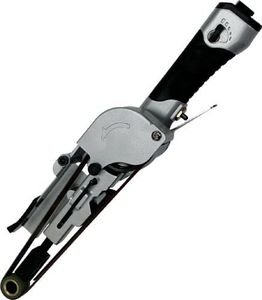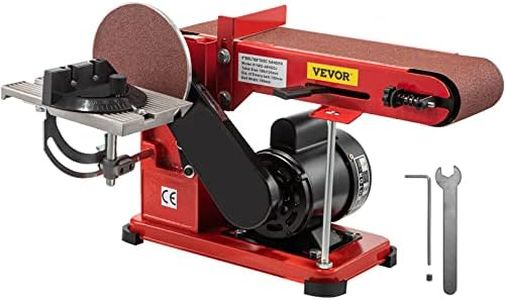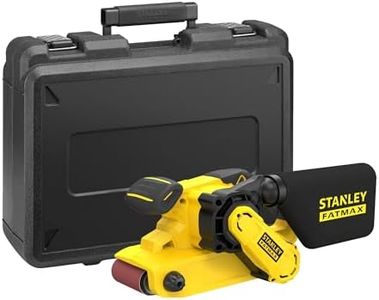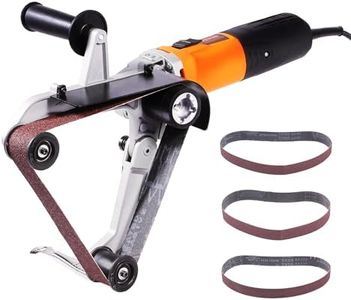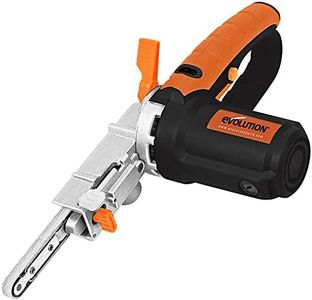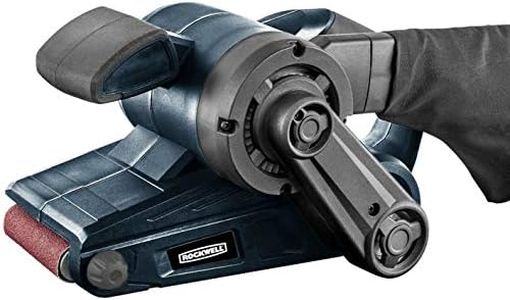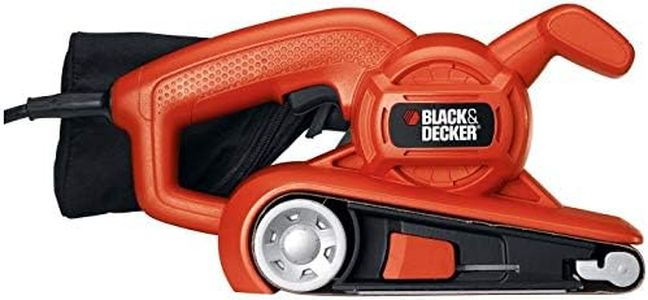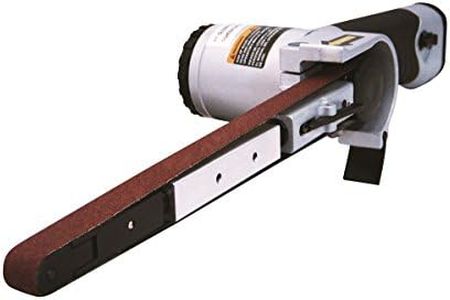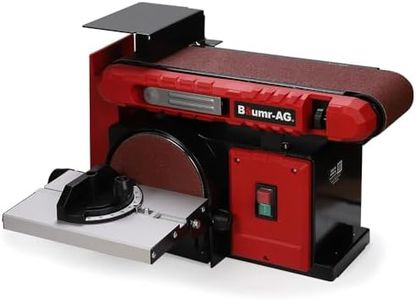We Use CookiesWe use cookies to enhance the security, performance,
functionality and for analytical and promotional activities. By continuing to browse this site you
are agreeing to our privacy policy
10 Best belt sanders
From leading brands and best sellers available on the web.Buying Guide for the Best belt sanders
Choosing the right belt sander can make a big difference in how easily and effectively you can smooth or shape wood and other materials. To find the best one for your needs, you should understand the main features and how they align with your tasks, workspace, and level of experience. Consider what kind of projects you plan to tackle—whether you’re doing heavy material removal, fine finishing, or working in tight spaces—and let those needs guide your choices.Belt SizeBelt size refers to the length and width of the sanding belt that the tool uses. This is important because it affects how much area you can cover at once and how fast you can work. Smaller belts, like 3 x 18 inches, are good for detail or tight space work, while larger sizes like 3 x 21 or 4 x 24 inches cover more surface and are better for flattening big boards or panels. Choose a smaller belt sander if you need precision or have limited storage, and a larger one if you’re tackling big, flat surfaces frequently.
Motor Power (Amperage)Motor power, measured in amps, tells you how much strength the sander has to keep running under pressure. A lower amperage (around 6 amps or less) is sufficient for lighter, occasional jobs, while higher amperage (8 amps or more) is better for tough, continuous work on hardwoods or if you use the tool frequently. If you rarely do heavy sanding or mostly work with softwoods, a mid-range amperage is usually adequate.
Variable Speed ControlVariable speed control lets you adjust how fast the sanding belt moves. This matters for precision and flexibility; slower speeds are useful for finishing or delicate work, while faster speeds help quickly remove material. Some sanders come with a fixed speed, but having variable speed is helpful if you plan to use your sander for different tasks, material types, or if you are still learning and want more control.
Dust CollectionDust collection keeps your workspace cleaner and helps you see what you’re doing as you sand. Most belt sanders have a built-in dust bag or port for attaching a shop vacuum. A good dust collection system is especially important if you’re sanding indoors or care about keeping airborne dust to a minimum. If you often work in small or shared spaces, look for sanders with efficient dust management features.
Weight and ErgonomicsThe sander’s weight and how it feels in your hands—its ergonomics—can make long jobs more comfortable and give you better control. Lighter sanders are easier to maneuver, especially overhead or on vertical surfaces, while heavier models may help the sander do more of the work on flat surfaces. If you plan on using the sander for extended periods or need to move it around a lot, pay attention to weight and how comfortable the handles feel to you.
Tracking AdjustmentTracking adjustment lets you fine-tune how the sanding belt runs so it stays centered during use. A good tracking system makes it easier to avoid frustration and extend belt life. If you’re new to using belt sanders or want less hassle, look for a model with easy, accessible tracking adjustment.


